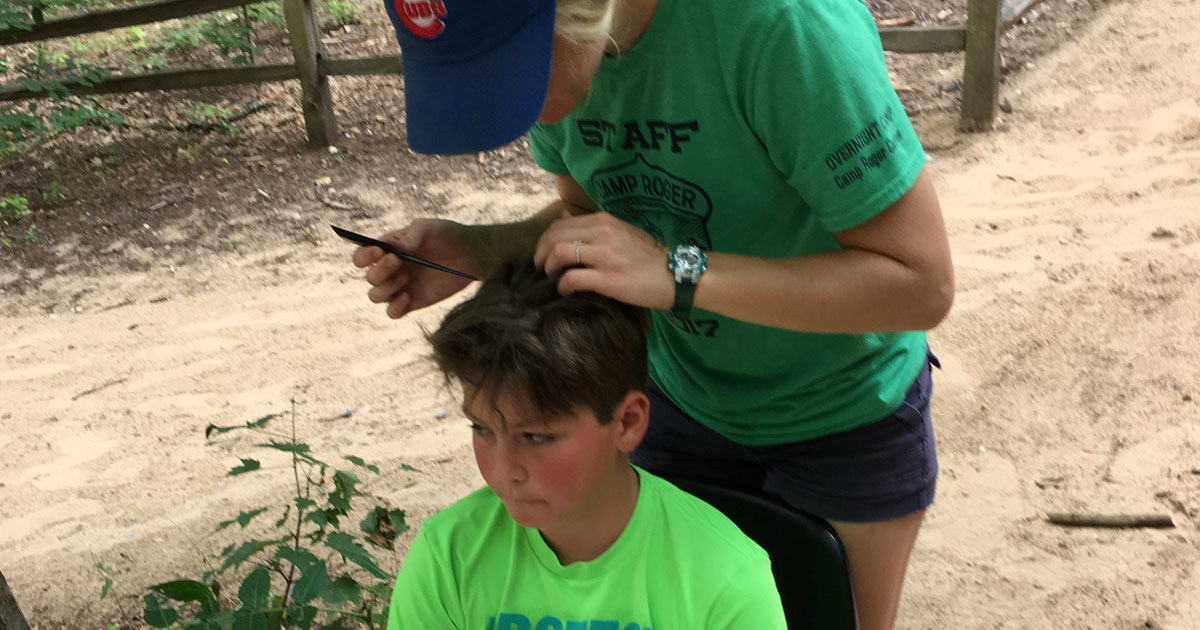Heads up: Back-to-school season is a prime season of giving in the head lice community. The parasitic insects are most common among preschool children attending child care, elementary school children and household members of infested children. While head lice are not known to spread disease, they still feed on human blood—and they can be quite the pest to get rid of.
Preventing Head Lice
Good news! Head lice don't have knees or wings, so they don't jump or fly. They are most commonly spread through direct head-to-head contact
Time for a new "do." Limit the surfaces your child's hair touches by keeping hair short, or keeping long hair tied up.
Repel the lice. Head lice are often associated with uncleanliness. In reality, the parasites love clean scalps. Use shampoo, conditioner and other hair products that contain oil such as coconut, tea tree, lavender, eucalyptus or rosemary. The fatty acids break down the exoskeletons of lice and kill them.
No sharing. When it comes to head lice, sharing is too much caring. Head lice can only live for roughly 24 to 48 hours without a host, but it is possible for the pests to spread through contaminated clothing and accessories. While children can—and, you know, should—continue to share toys and books and friends and stuff, discourage them from sharing anything that touches hair: combs and brushes, hair accessories, hats and bike helmets, scarves and coats, towels, headsets and earbuds.
Treating Lice
Despite precaution, head lice are extremely common among young children. If lice find their way into your home, understand that you're not just treating living, breathing lice, but also the eggs—called "nits"—which take eight or nine days to hatch.
Over-the-counter and prescription treatments aren't always successful.
"The chemicals aren't working anymore," said Rebecca Curtis, Remedy Lice Boutique. "Over the years, the lice have become more and more immune to the chemicals."
Curtis notes some over-the-counter and prescription treatments for lice could take several days to completely eradicate the problem, and some of the chemicals only kill only the adult lice, and not the nits.
Remedy Lice Boutique, which has a location in Grand Rapids and another opening soon in Kalamazoo, offers a unique service to treat head lice called AirAllé that is effective within several hours. The only medical device regulated by the FDA to eradicate lice, AirAllé uses heat to kill both grown lice and the louse inside each egg. After heat is applied, staff conduct a full comb-out and then an oil treatment with a cosmetic grade of silicon oil called dimethicone.
"Dimethicone is such a heavy oil, it smothers lice quickly," Curtis said. Whereas some oils—such as olive oil, and oils found in mayonnaise, margarine and butter—could take eight hours to suffocate lice. Dimethicone takes 30 minutes.
If the AirAllé treatment is too costly for families, Remedy Lice Boutique offers products and guidelines for effective lice treatment.
Cleaning after lice.
Lice are so gross, it's preferable to torch anything they may have touched. But we have to be realistic.
Again, head lice can only live for up to two days without a host, so you don't have to spend a lot of time or money on household cleaning—yet the Centers for Disease Control and Prevention (CDC) notes you should take some measures to prevent re-infestation:
Machine wash and dry clothing, bed linens and other items that the infested person wore or used during the two-days before treatment, using hot water and high heat. Clothing and other items that that are not washable—including stuffed animals—can be dry-cleaned or sealed in a plastic bag and stored for two weeks.
Soak combs and brushes in hot water: five to 10 minutes should do.
Vacuum the floor and furniture—particularly where the infested person sat or lay.
Leave your pets alone. Head lice can only survive on human blood, so don't worry about your dogs, cats or other pets picking up the pests.
Written by Cassie Westrate, staff writer for West Michigan Woman.
Photo courtesy of Lisa Young.




